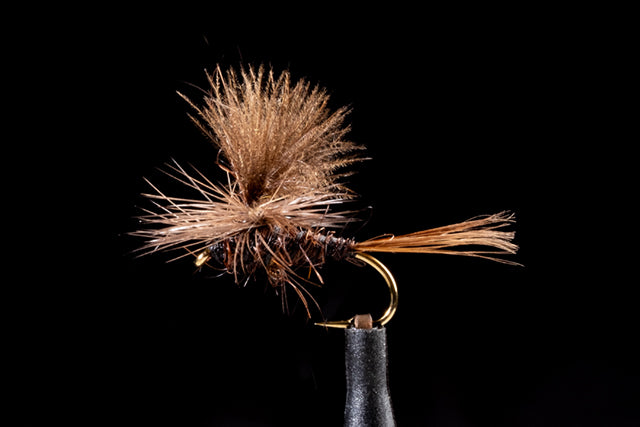Four Springs Lake | Tasmanian Fly Fishing Spots
OVERVIEW OF FOUR SPRINGS LAKE
Four Springs Lake is a purpose built trout fishery located approximately 40 kilometers west of Launceston. Due to being relatively close to major population centers, it is a popular fishery which can become busy. It is a medium sized water with excellent boat launching facilities and holds a good population of brown and rainbow trout.
Fish numbers rely on stocking by the Tasmanian IFS, with the lake receiving liberations of adult wild brown trout (transferred from waters like the Great Lake) and rainbow trout fry.
Fish size can vary depending on the stocking programme, but in recent years trout have averaged 2-4 lb, with larger fish common.
WHEN TO FISH FOUR SPRINGS LAKE
Due to its low altitude the lake performs best in the first half of the season, with best months being September to early December. During summer months, the water becomes warm and weed choked, making angling difficult. October and November are best months for mayfly hatches.
HIGHLIGHTS OF THIS FISHERY
- Wet fly fishing from boats and shore are both very effective in the first months of the season. Loch-style fishing teams of wet flies works all over the lake, but is best done early in the year before weed growth becomes an issue.
- Frog and tadpole feeders are a feature for shore anglers, being at a lower altitude the action starts earlier here than more elevated lakes on the Central Plateau. The lower elevation also makes Four Springs a better option for many anglers avoiding unpleasant weather conditions experienced on the mountain during August and September.
- Mayflies hatch very well on the lake, and are typically found weeks before they start to appear on the Central Highland lakes. Best dun days will be mild, have light wind and cloud cover. Fish feeding on red spinners are a real feature, and calm afternoons can produce very exciting fishing with fish leaping clear of the water chasing spinners.
- Keen anglers who to prefer to fish early in the day can encounter large hatches of midge and tiny caenid mayfly. Both produce fantastic fishing during the first few hours of the day, with large numbers surface feeding fish making the early start worthwhile. Midge hatches begin early spring, with October and November being the best time for caenids.
- Another feature of the lake is evening mudeye migrations and fish leaping to adult damsel flies throughout the day. Damsel fly feeders are spectacular, but challenging to catch.
ACCESS POINTS TO FOUR SPRINGS LAKE
Four Springs has no named bays or shores, but as general guide:
- The marsh areas at both the northern and southern ends of the lake are excellent areas to look for fish hunting frogs and tadpoles.
- The whole lake can produce excellent mayfly hatches, and anglers who are shore based shore look at the wind direction before setting off. Sheltered shores are great places to look for fish feeding on spinners later in the day.
- Loch-style works well all over the lake, with the water on the western side opposite the boat ramp through to the dam being slightly deeper. Drifts are popular through the centre of the lake, with the prevailing north-westerly winds providing reliable drifts.
Map of access points by IFS Tasmania
GEAR REQUIRED
An 8’6 - 9’ft rod in line weights 4 or 5wt is a great choice when targeting frog and tadpole feeders. They enable fast, but delicate presentations, modern rods in these line weights are amazing fishing tools. The Scott G Series is one of the sweetest fishing rods made, and perfect for this type of fishing!
Shore based anglers chasing dun feeders, a 9’6” 5wt rod like the Scott Centric rigged with a WF floating line is perfect. It will fish well close, has power to reach fish out wide and will fish teams of dry flies, nymphs and small wets.
Loch style anglers are best suited using rods between 9’6” and 10ft in length with line weights 5# or 6# being ideal. I prefer fishing a 5 weight rod for dry fly, and a 10ft 6wt rod when pulling wets. Line type will vary on the day and time of the year. If you are pulling wets early season, using sinking lines will be an advantage in the boat.
FLY SELECTIONS
Wet Flies
These will be similar to those used at places like Penstock Lagoon. Patterns should include mayfly Nymphs, Damsel Fly Nymphs, Claret Dabbler, Magoo, Shrek and Woolly Bugger MK2, Stick Caddis and Fur Flies.
Dry Flies
These should include Red Spinners, Shaving Brush, Possum Emergers, Foam Mudeyes, F Fly, Dun and Caddis patterns.
Manic Fly Collection Must Haves

Adult Damsel Blue

Belinda's Bitchslap Olive

Belinda's Bitchslap Olive & Pink

CDC Thorax Dun Dark

Tassie Dun

Possum Emerger

Palmered Spinner Orange

Quill Spinner Rusty

Quill Klink

Stick Caddis

Possum Dun

Hi Vis Possum Dun

